Exercise
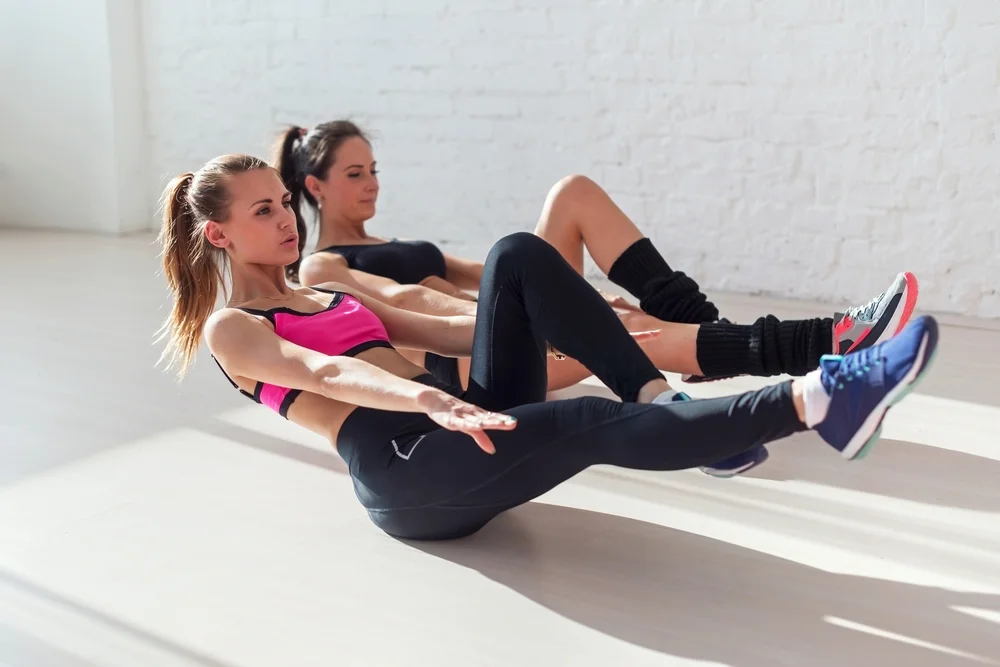
If you want to make a positive change in your life and your health, taking the first step towards this new life is always the hardest part.
It is not always easy to decide the type of physical activity you want to pursue when you are just getting started on your road toward better health.
Even if you have never stepped foot in a gym before, you have probably heard that both weight training and pilates are excellent exercises to do to improve your overall well-being.
But is the difference between the two? And which one is best for your exercise style?
In this article, we are going to go through everything that you need to know about both weight training and pilates.
We will go through the equipment they use, what is better for specific goals, and which one is most suitable for different age groups.
Keep reading to find out whether weight training or pilates is the right workout for you!
What Is Weight Training?
The development of your skeletal muscle groups’ size, as well as their strength, may be accomplished through an exercise known as weight training.
To target and strengthen certain muscle groups and motions, weight training makes use of a wide range of specialized exercise apparatus.
Benefits Of Weight Training
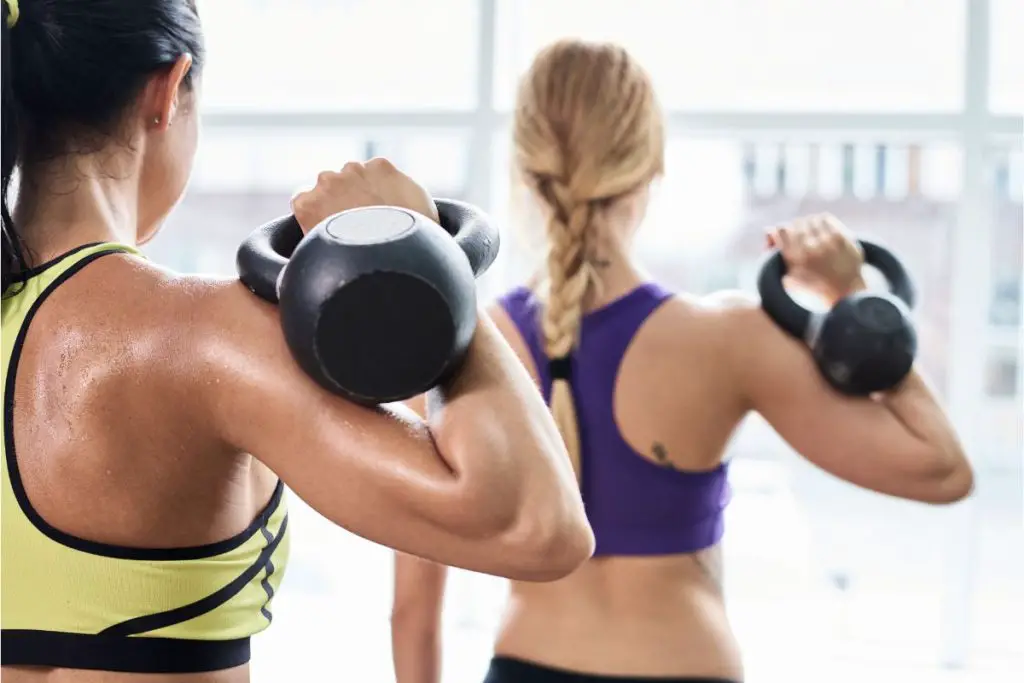
Preserves Both Bone And Muscle Mass
Impact training or high-intensity resistance training for just 30 minutes a day, twice a week can enhance bone density, shape, and strength in postmenopausal women who have low bone mass.
Contributes To The Burning of Calories
Working out with weights is a great way to burn calories.
After completing strength training, your body will return to its resting condition, and during this time, it will continue to burn calories, as stated by the American Council on Exercise.
This is referred to as EPOC, which stands for excess post-exercise oxygen consumption.
It Is A Great Way To Improve Your Body Mechanics
According to a study that was conducted and published by Aging Clinical and Experimental Research in November 2017, doing at least one resistance or strength training workout each week can increase muscle strength by up to 37 percent, muscle mass by 7.5 percent, and functional capacity by 58 percent.
Helps To Maintain A Healthy Weight
According to Everyday Health, resistance training keeps your metabolism working for a significantly longer period of time after exercise than aerobic training does.
Enhances The Health Of The Cardiovascular System
The United States Department of Health and Human Services says that engaging in strength training for the muscles lowers your resting blood pressure, which in turn lowers your chance of developing cardiovascular disease and hypertrophy.
What Type Of Exercise Is Weight Training?
In general, weight training is an isotonic activity. This means that the joint angles will change while the activity is performed (dynamic).
Isometric workouts include holding the joint angles steady throughout the movement.
Compound exercises and isolation exercises are the two types of workouts that are required for weight training to be effective.
Compound workouts are those that target many muscle groups at once and typically incorporate movement components (like squats, and leg presses).
Exercises that are considered to be isolation exercises focus just on one joint at a time, such as the leg press.
Weight Training Equipment
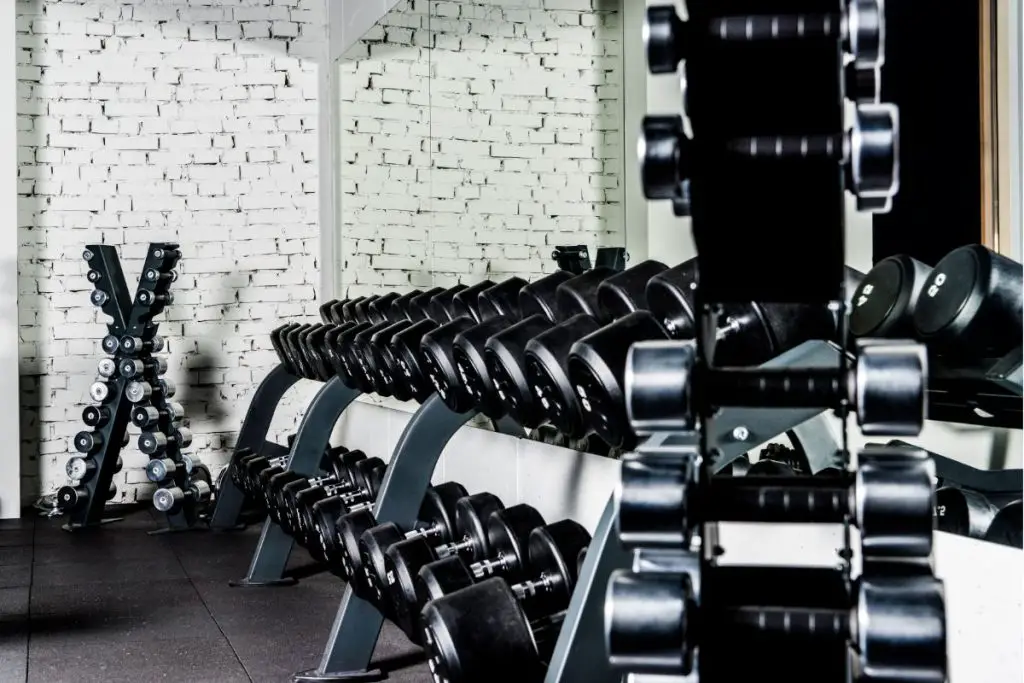
There is a wide variety of equipment that you can use in weight training. Here are just a few you can try out.
Dumbbells
Using dumbbells is an excellent way to perform a variety of workouts, including curls, lunges, and several other well-known exercises.
Weight Machines
Machines are quite popular in today’s fitness world. There is a wide variety of exercise equipment available, including the leg press, curl, and many more like it, all of which are designed to target certain muscle regions.
Bench Press
The bench press is one of the most common and widely practiced exercises in the world of weight lifting. The chest muscles will benefit tremendously from this fantastic exercise.
Squat Rack
Another fantastic piece of fitness equipment is the squat rack. Squats are a wonderful workout for building your leg muscles.
Who Can Do Weight Training?
Everyone, regardless of fitness level, should engage in strength training.
We highly encourage weight training for everyone who is not only interested in increasing the size of their muscles but also in maintaining the strength of their muscles and joints.
How Much Will Weight Training Cost?
If you are going to be weight training, then it is very likely that you will be doing this in a gym.
Gym Memberships can cost anything from $10 to $100 per month, and private lessons can cost $70-100 or more per hour.
What Is Pilates?
Joseph Pilates developed the Pilates method in the early 20th century as a comprehensive approach to physical health.
He devised workout routines to improve both the physical and mental well-being of humans. Pilates is built on a foundation of developing core strengths.
It is very important to strengthen your core to achieve improved stability of the trunk and torso.
Throughout its history, Pilates has evolved into two distinct styles: classical and contemporary. Both of these variants are taught by certified Pilates instructors.
Contemporary Pilates is quite similar to Classical Pilates, but it also integrates ideas from physical therapy, which makes it suitable for injury rehabilitation.
Classical Pilates adheres as closely as possible to Joseph Pilates’s original teaching method.
Benefits Of Pilates
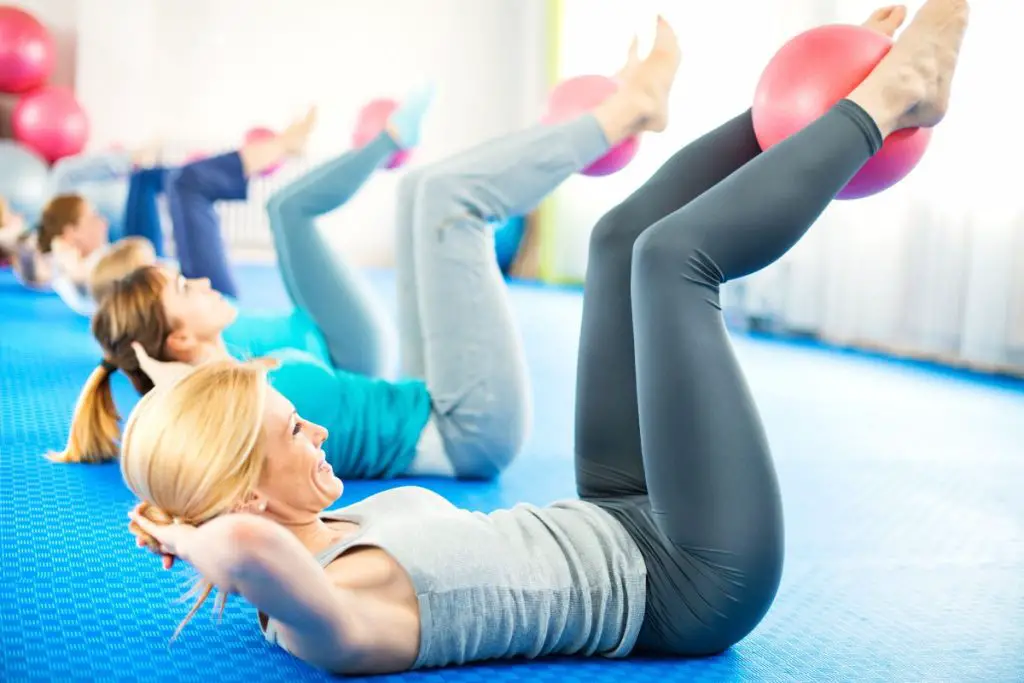
Enhances The Strength In The Core
Research that was conducted in October 2020 by Proteus Journal found that postpartum women who participated in Pilates mat exercises had improvements in both the strength and endurance of their core muscles.
The research also shows an improvement in the women’s cardiorespiratory fitness as well as a reduction in their waist circumference measurements.
Strengthens While Also Enhancing Flexibility
Research has found that exercising with Pilates equipment significantly increased cervical flexibility, as well as trunk motions, hip flexibility, and overall flexibility.
Improves Posture
After practicing pilates for a period of 30 weeks (two sessions a week for an hour), women with hyperkyphosis saw a considerable improvement in their posture.
Reduces Back Pain
Pilates-specific exercise programs are more successful than other types of exercise programs in the treatment of chronic pain.
It is generally agreed upon that the Pilates approach is superior to performing little or no exercises in terms of its ability to reduce discomfort.
Prevents Sickness
Pilates has the potential to be a good exercise for people suffering from a variety of illnesses, including breast cancer, back pain, and scoliosis. In addition to this, it can aid in the prevention of significant injuries in adults, the elderly, and athletes.
Improves Balance
Pilates training can have a high to moderate influence on people’s dynamic balance. This is especially true for older people.
Mental Health
Pilates is good for both physical and mental health. Pilates is a fantastic activity for relieving tension and anxiety, so consider giving it a try if any of these apply to you.
Improves Overall Athletic Performance
Pilates training has been found to increase the performance of runners over a distance of five kilometers by altering the amount of energy required for metabolism and the amount of activity in the muscles.
Is Resistance Training Included In Pilates?
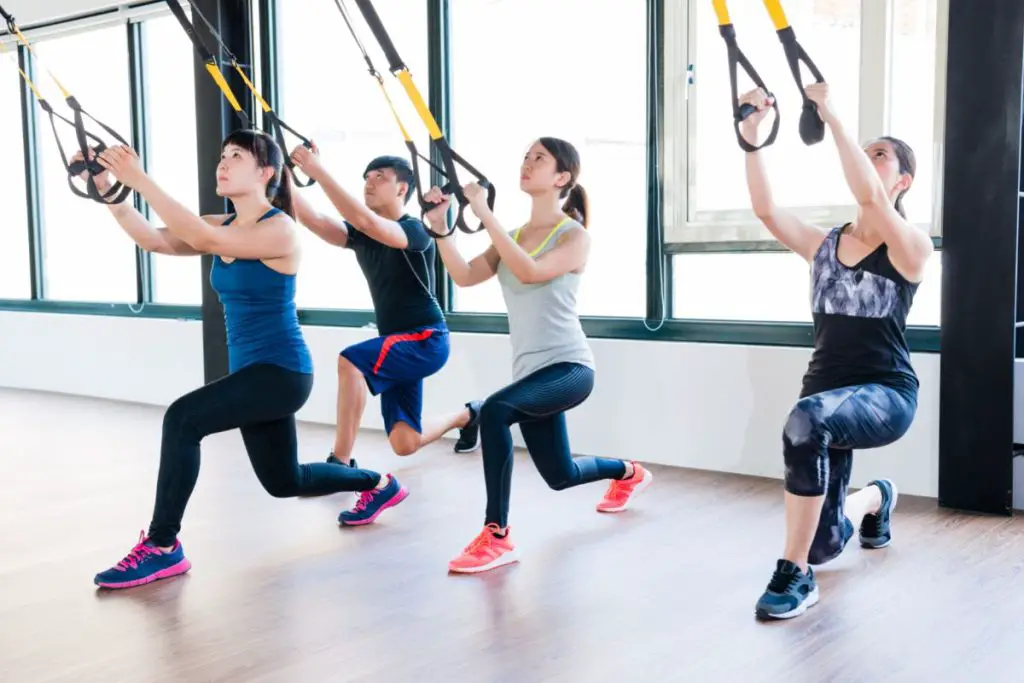
Yes, pilates is a form of resistance training.
A significant portion of the apparatus, such as reformers and chairs, make use of a spring resistance system that has the capability of being changed. Additionally, you may use resistance bands on the mats to offer extra resistance.
What Type Of Exercise Is Pilates?
Joseph Pilates wanted to develop a workout routine that would enable functional movements, which refers to developing strength through increased flexibility.
Simply stretching out your muscles will give you more flexibility, but it won’t always provide you with more stability or strength.
As a consequence of this, Joseph devised his very own technique in an attempt to both strengthen the muscles and improve flexibility.
Pilates is about being powerful and strong as well as being centered and balanced.
Pilates Equipment
Numerous very well-liked variations of Pilates exist, each of which emphasizes the usage of a particular piece of apparatus.
Here are the most common pieces of equipment that you quill use in your pilates exercises.
Mat
Pilates mats are about half an inch thick and made of dense foam. In comparison, yoga mats are about an inch thick.
Both types of mats are designed to give additional support to your back and body.
Reformer
The Reformer is a piece of Pilates equipment that incorporates the use of springs and offers several attachments for doing supplementary exercises.
Reformers are an excellent piece of exercise equipment for exercising both the core and the legs.
While using the reformer will not help you generate large muscles, it will help you acquire toned muscles.
Pilates Chair
The use of chairs in your training routine can present a significant challenge to both your upper body and lower body.
They often come with handlebars for performing workouts like dips and have spring attachments that increase the amount of resistance they provide.
The chair is a piece of equipment that is both incredibly durable and quite adaptable.
Cadillac
A Cadillac looks a lot like a bed with a frame.
It is a traditional mat with additional support in the form of springs added.
Who Can Do Pilates?
Anyone may participate in a Pilates class. Pilates is great for people of all ages and fitness levels, including athletes, senior citizens, and men and women of all ages.
Pilates is an excellent choice for you if you would want to develop your core strength as well as your balance and stability if these are goals of yours.
How Much Will Pilates Cost?
Depending on where you live, the cost of a Pilates membership might range anywhere from $50 to $100 for a private session.
Pilates lessons can range anywhere from $20 to $50 per session and are typically offered at many gyms.
Weight Training Vs Pilates Body Type
As weight training and pilates are two different types of exercise, they will both have a different impact on your body and how it will look.
Pilates and weight training will both help you build muscle, but the resulting physiques will look extremely different from one another.
We are going to get into the particulars of each, but if you have a certain physique in mind, you could find that one of these approaches is more beneficial to you than the other.
In a nutshell, weight lifting can lead to a larger, bulkier body, but Pilates can help you achieve a strong, lean, and toned physique.
It is important to note that doing adequate exercise is not enough on its own. You won’t be able to get your ideal figure if you don’t follow a healthy diet.
Weight Training Body Type
When you lift weights in the gym, your goal will probably be to a get a big, bulky body.
However, a more toned body type can be developed, for instance, by performing exercises with a high number of repetitions but a low total weight.
If you want to create larger, bulkier muscles, then you will need to follow the low rep, high weight model.
Pilates Body Type
As was said before, the development of Pilates was motivated by a desire to create muscles that were robust, flexible, and useful.
When you perform Pilates, you won’t normally build muscles that are huge, massive, and rigid like those created in weight training.
On the other hand, if you keep a consistent Pilates exercise routine, you may sculpt your body and improve your posture.
Which Is Better For Weight Loss: Pilates Or Weight Training?
Pilates and strength training are both fantastic methods for shedding extra pounds.
Pilates is without a doubt fantastic for developing a leaner physique and aiding in the process of weight loss.
Lifting weights is often considered to be one of the most effective ways to burn calories through exercise. It is wonderful for assisting you in losing weight, and it is fantastic for assisting you in maintaining the weight loss that you have achieved.
When it comes to shedding extra pounds, weight lifting is proven to be more beneficial than Pilates.
However, you have to bear in mind that doing Pilates and weightlifting are not sufficient to achieve your fitness goals if you also do not follow an appropriate diet.
Which Is Better For The Rehabilitation Of Injuries: Pilates Or Weight Training?
Pilates and strength training are excellent forms of exercise for rehabilitation.
To modify the exercise for persons who have injuries or a restricted range of motion, contemporary Pilates has borrowed several techniques from physical therapy.
It has also been demonstrated that Pilates can positively help lower back ailments.
Working out with weights is not only beneficial for strengthening muscles but also for rehabilitating injuries.
When you are recovering from an injury, many medical professionals, including physical therapists, will recommend that you perform exercises with lighter weights. This is because these exercises allow you to focus on specific muscle regions.
There is no obvious winner in this category, and everything depends on the specific circumstances.
When done properly, a contemporary type of Pilates may be just as useful for injury rehabilitation as weight training, which may be better for you in some circumstances.
Which Is Better For Weight Loss: Pilates Or Weight Training?
Typically, Pilates produces muscle that is both lean and powerful. As was said before in the Pilates build, performing exercises does not result in arms or legs that are noticeably larger than normal.
Lifting weights can help you create more muscle, particularly if you lift big weights for a limited number of repetitions.
The use of weights is unquestionably better when it comes to creating larger muscles, however, Pilates may be superior when it comes to building muscles that are more toned and useful.
Which Is Better For Flexibility: Pilates Or Weight Training?
When it comes to flexibility and mobility, Pilates is superior to weight training.
Increases in flexibility and mobility are among the primary advantages that come from regular Pilates practice.
Pilates is an excellent method for simultaneously strengthening and lengthening your muscles, which results in muscles that are more suited for functional movement. Pilates is becoming increasingly popular among elite athletes for a good reason.
Lifting weights often isn’t considered a great way to improve your flexibility. People often lift weights to grow muscle rather than for the flexibility advantages that come with doing so.
However, it is possible to increase your flexibility by combining specific exercises and positions with weight lifting.
When it comes to flexibility and mobility, there is no contest: Pilates is the undisputed victor.
Summary – What Exercise Is Better?
You won’t go wrong with any option when it comes to working out. Lifting weights offers a variety of advantages, including the growth of larger muscles, the reinforcement of bones and joints, and many other advantages.
On the other hand, if you can pick only one, we would recommend that you go with Pilates. This is because it helps you develop muscles that are both powerful and flexible.




